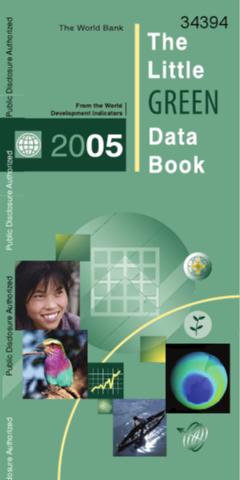The Little Green Data Book 2005
The Little Green Data Book 2005 is based on the World Development Indicators 2005, and represents an abbreviated collection of information. Its production is a collaboration between the Development Economics Data Development Group, and the Environment Department of the World Bank. Development and poverty alleviation-the World Bank's mission-call for a long-term vision. Enhancing environmental quality, improving natural resource management, and maintaining global ecosystems are all important steps toward this goal.












